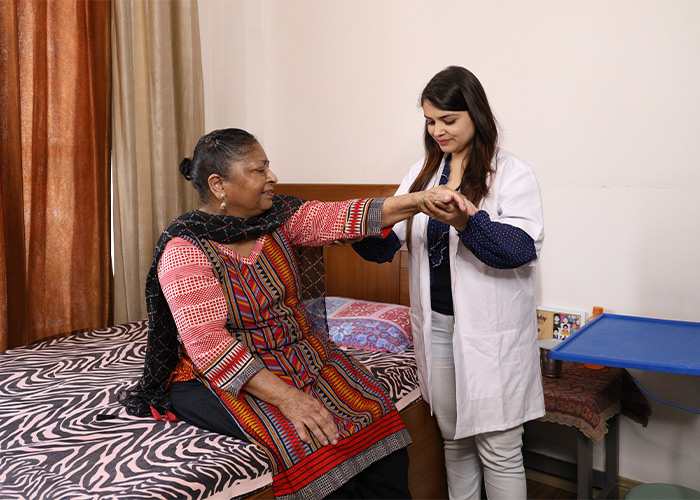When a loved one requires a tracheostomy, it’s natural for families to feel overwhelmed. Tracheostomy care is a critical aspect of managing a patient’s health, and while traditionally it was restricted to hospital ICU settings, advancements in home healthcare services have made it possible to ensure the same level of care in the comfort of one’s home.
What is a Tracheostomy?
A tracheostomy is a surgical procedure where a tube is inserted into the windpipe (trachea) through an opening in the neck. This allows air to flow directly into the lungs when normal breathing is obstructed.
Common Reasons for a Tracheostomy:
- Blocked or Narrowed Airway: Due to tumors, trauma, or congenital conditions.
- Prolonged Mechanical Ventilation: For patients requiring extended ventilator support.
- Severe Respiratory Issues: Conditions like chronic lung diseases or neuromuscular disorders.
- Inability to Clear Secretions: Neurological disorders affecting swallowing or coughing.
- Emergency Situations: Severe facial or neck injuries obstructing airflow.
Who Needs a Tracheostomy?
- Patients with severe airway obstruction (e.g., tumor, swelling, or foreign object).
- Individuals on prolonged mechanical ventilation.
- Patients with neurological disorders affecting respiratory muscles.
- Those with chronic lung diseases requiring consistent airway management.
- Individuals with trauma or injury to the face, neck, or chest affecting normal breathing.
Understanding Suctioning in Tracheostomy Care
Suctioning is a crucial process to clear mucus and secretions from the tracheostomy tube, preventing blockages and infections. Proper suctioning ensures:
- Clear airways for smooth breathing
- Reduced risk of lung infections
- Enhanced patient comfort
Why ICU-Level Care at Home for Tracheostomy Patients?
Managing a tracheostomy at home requires specialized care, skilled nursing, and a proper setup. An ICU setup at home includes:
- Medical Equipment: ICU patient bed, Air mattress, Ventilators/BiPAP/CPAP, Suction machines, Oxygen concentrators/cylinders, Infusion pump/Syringe Pump, IV stand, DVT Pump, Cardiac monitor, and Nebulizer.
- Trained Professionals: Skilled nurses and caregivers trained specifically in tracheostomy and suctioning care.
- 24/7 Monitoring: Continuous monitoring of oxygen levels, heart rate, and overall patient condition.
- Hygiene Protocols: Strict adherence to hygiene practices to prevent infections.
Essential Steps in Tracheostomy Care at Home
- Regular Cleaning: Ensuring the tube and surrounding area are clean.
- Suctioning: Removing secretions at regular intervals.
- Tube Replacement: As per medical guidelines.
- Infection Control: Following sterilization protocols.
- Patient Comfort: Ensuring proper positioning and routine check-ups.
Role of Skilled Nurses in Tracheostomy Care
A trained nurse plays a vital role in tracheostomy care at home by:
- Monitoring vital signs regularly.
- Maintaining saturation/SPO2
- Performing timely suctioning and cleaning by aseptic technique.
- Check the skin for signs of infection, redness, sores, discharge, or pain. Report any problems to your doctor.
- Educating family members on emergency protocols.
- Ensuring a seamless connection with healthcare professionals.
Benefits of Home Tracheostomy Care
- Comfort of Home Environment: Reduces patient stress and promotes healing.
- Cost-Effective: Significantly more affordable than prolonged hospital stays.
- Personalized Care: One-on-one attention from skilled nurses.
- Family Involvement: Loved ones can actively participate in care.
Conclusion
With the right professional support, equipment, and training, tracheostomy and suctioning care can be effectively managed at home. Home healthcare services bridge the gap between hospital-level care and the emotional comfort of home, ensuring patients receive the best possible care.
If you or your loved one requires tracheostomy care at home, reach out to trusted home healthcare providers who can ensure ICU-level care tailored to your needs.





